#ikoma city
Text
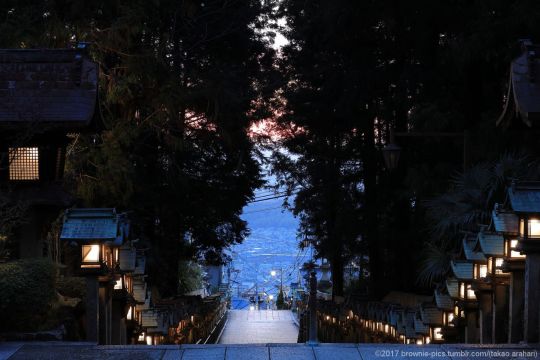




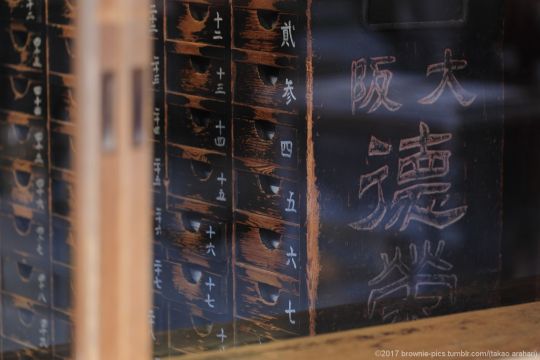
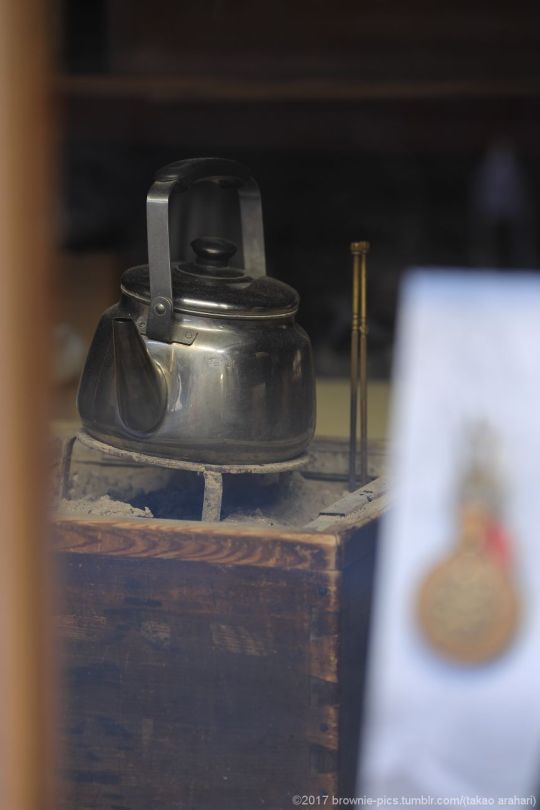


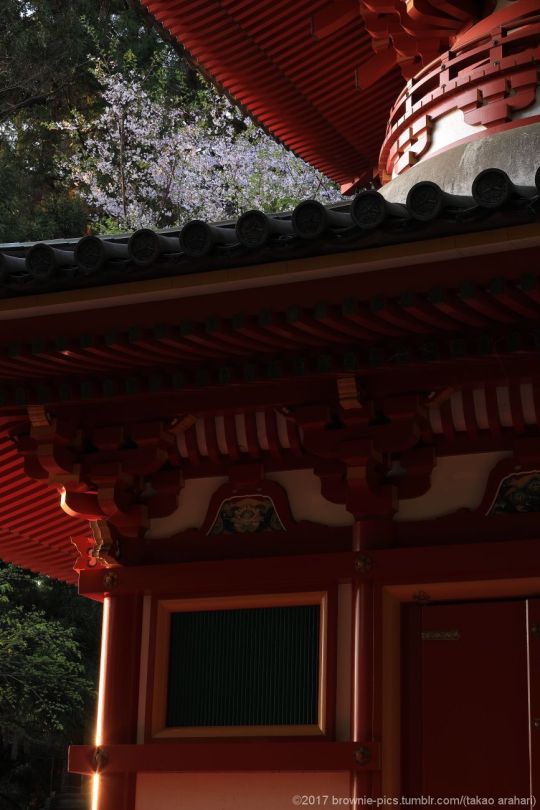
’24.4.13 生駒山 宝山寺にて
今日は午前中に用事。なので奈良公園には出向かず、でも写真は撮りたいってんで近所の宝山寺へ。
夜明け直前の境内はやはり静寂。朝のお勤めの読経が静かに響いていました。
・・陽が昇ってきました。光がお寺を静かに照らし始めます。
#奈良#nara#生駒市#ikoma city#日本#japan#宝山寺#houzanji temple#早朝#early morning#静寂#silence#桜#cherry blossoms#春#spring#photographers on tumblr#natgeoyourshot#奈良公園じゃないシリーズ
246 notes
·
View notes
Text
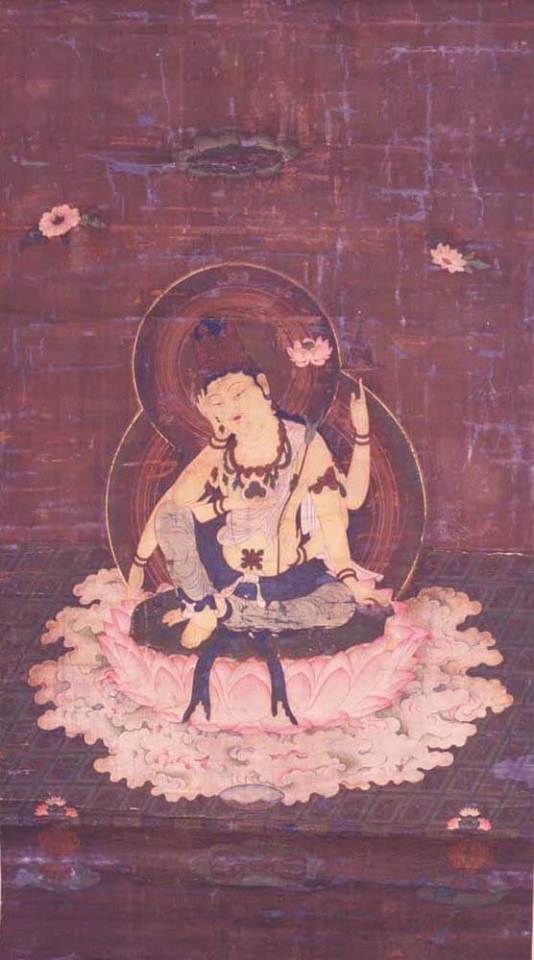
A painted image of Nyoirin Kannon Bodhisattva (如意輪観音菩薩) dating to the Kamakura period (1185-1333) at Hōzanji Temple (宝山寺) in Ikoma, Nara Prefecture
Image from the city's digital museum
#japanese art#buddhist art#如意輪観音菩薩#如意輪観音#nyoirin kannon#観音菩薩#観音#kannon#avalokitesvara#奈良県#nara prefecture#生駒市#ikoma#宝山寺#hozanji#真言律宗#shingon ritsu#arte japonés#arte budista
56 notes
·
View notes
Text
Bukouyawa 武功夜話 is a fraudulent text, many of its contents are garbage
Present head of the Ikoma family published a writing decrying Bukouyawa as a fake document, and that it’s actually a historical fiction written in the 1970s by the man who purported to “discover” it amongst ancestral documents. Its historical value is just about as good as a Yoshikawa Eiji novel.
TL;DR, if this claim is true, then these accounts below are utter falsehoods, and should not be bandied about as “fact” anymore:
1) Nobunaga’s consort, Lady Ikoma, “recommended” Hideyoshi into his service
2) Lady Ikoma’s name was Yoshino/Kitsuno
3) The Ikoma family were horse-merchants/horse lenders
4) Lady Ikoma’s late first husband is called Tsuchida Yaheiji
5) There was some sort of dramatic love story/romance between Nobunaga and Lady Ikoma
The above were all “facts” that originated solely in Bukouyawa, and was not verified in other texts. If Bukouyawa is fake, then all the above are fantasy. There were perhaps other stories, but Ikoma-san doesn’t provide exact examples, so I don’t know what else are also debunked by this.
(I still use “Ikoma Kitsuno” as a tag in this blog for housekeeping purposes)
For a good long time this Bukouyawa text was viewed as, at the very least, a “valuable historical material”, even if it may not be actually written in the 1590s as it was claimed. There has been many question and doubt about this text ever since its “discovery”, but there’s never been a concrete dismissal of it being fake until now. Even highly-respected historians such as Owada Tetsuo said it’s not a fake, but possibly just a later-date text from the Edo era.
Ikoma Hideo says that it’s all not true. He narrated that in the 60s and 70s, a man from the Yoshida family (the man who claimed to discover Bukouyawa) approached the Ikoma family about a novel he was writing. The then family heads (presumably Hideo-san’s father and grandfather) met with Yoshida, and presumably had some discussions about it.
The Ikoma family then shrugged off the matter, thinking that a historical novel is just fiction and is not very important to the family, and forgot about this issue altogether. However, in 1978, Yoshida then announced the resulting novel as a legitimate ancestral document. Yoshida also puffed up his credentials by presenting himself to be a descendant of Maeno Shouemon Nagayasu 前野将衛門長康, Oda vassal.
Ikoma Hideo-san doesn’t say why the family didn’t immediately object or publicize counter-claims that something funny was going on.
He did provide as part of the proof photos of an exhibit from 1977, before Yoshida’s fraudulent claims, where he was only introduced as “an antique dealer and collector”. There was absolutely nothing about how he’s a Maeno descendant, as he supposedly only started spreading around the claim the next year.
Ikoma-san also objected to any claims from Yoshida about how the Maeno family or Yoshida’s other ancestors were vital in helping the Ikoma settle down in Owari. It’s slander to the family honour, he says.
I wonder if the Ikoma family had also approached the Kounan City about this. I recalled that the city’s history tour had once involved a “Nobunaga and Kitsuno romance” tour, but it’s now removed. The Ikoma family properties are repackaged into a more generic “historical sites tour”. Bukouyawa being a fraud also meant that the epic “romance” tale involving Nobunaga is a big lie, after all.
Not to say that he didn’t love her, to be entirely fair. There is a story that Nobunaga cried for days when she died, and it was a narrative recorded in a temple archive, which is somewhat credible. It’s just that the narrative presented in Bukouyawa is not how their relationship actually went.
7 notes
·
View notes
Text
Matcha tea bamboo whisk - Chasen
They say 95% of made in Japan matcha tea whisk, which is called chasen (茶筅)is made in Takayama of Ikoma city in Nara prefecture and they say there are about 20 craftsmen making these whisks.
The proper made in Japan bamboo whisks are made with those bamboo which is dried slowly for over 10 years , so it takes more than 10 years to make one whisk, but the price of whisk has remained very…

View On WordPress
0 notes
Text

0 notes
Text
Merchants of kaidan monastery

Merchants of kaidan monastery full#
Price: Daibutsuden, Hokke-do, and Kaidan-do each 500 yen Visiting Hours: temple grounds always open (Daibutsuden, Hokke-do, and Kaidan-do open 8:00 AM - 4:30 PM: varies by season) There are several halls scattered throughout the temple grounds, such as the Nigatsu-do Hall overlooking the Nara Basin and the Kaidan-do Hall where you can see clay Shitennoji statues representative of the Nara period.įrom JR Yamatoji Line "Nara" Station or Kintetsu Nara Line "Kintetsu-Nara" Station, 4-10 minutes by Nara City Outer Loop bus and a 5-minute walk from "Daibutsuden Kasuga-taisha-mae" bus stop or 20 minutes walking from Kintetsu-Nara Station The Daibutsu-sama is also of dramatic scale, at approximately 15 meters tall with a 5-meter-tall face. The Great South Gate and Great Buddha Hall structures are just a few the temple's grand structures, among the world's largest. The large temple grounds were constructed as the "eastern large temple" (where the name "Todai-ji" comes from) in Heijikyo, the capital during the Nara period. The statue, also known as Rushanabutsu, was made during the Nara period per Emperor Shomu's Buddhist teachings as a prayer for happiness and fortune for all. The temple's "Daibutsu-sama" is so indispensable, it can be said there is no point to coming to Nara if you don't see the giant Buddha statue there. One thing you can't afford to miss when you come to Nara is "Todai-ji Temple". Todai-ji Temple's Statue of Buddha and Buildings are Both Extraordinary in Size The most ideal season is autumn, when tourists visit from all over the country hoping to see Nara's fall foliage and the pieces of culture uniquely seen in the autumn season. All over the larger Nara region, you can find countless more highlights, including the mountainside roads said to be the oldest roads in Japan, Yoshino and the world heritage site that is all of Mount Yoshino itself, and the Ikoma and Ikaruga districts which appear even in Japanese mythology.īecause Nara has no ocean and is land-locked on all four sides, its climate is characterized by particularly hot summers and cold winters.
Merchants of kaidan monastery full#
"Nara-machi" is full of historic character, with its untouched streets and shops from the Edo period and many facilities once used by tradesmen. You can reach the area from Kyoto or Osaka by taking the JR or Kintetsu Railway lines, about an hour trip. At the center of the former Japanese capital of Nara is the Nara Park area, where Todai-ji Temple, Kofuku-ji Temple, and Kasuga Grand Shrine are located.

1 note
·
View note
Text
Cosmos Festival 2022" at Flower Station Ikoma Kogen in Miyazaki Prefecture, where 1 million cosmos trees are in full bloom and gourmet products can be enjoyed.
Cosmos Festival 2022″ at Flower Station Ikoma Kogen in Miyazaki Prefecture, where 1 million cosmos trees are in full bloom and gourmet products can be enjoyed.
Miyako Shop and Restaurant is holding the “Flower Station Ikoma Kogen Cosmos Festival 2022”. The period is from September 17 to October 23 (9:00-17:00 each day).
The venue, “Hana no Eki Ikoma Kogen” (8565 Minami-nishikata, Kobayashi City, Miyazaki Prefecture), is a tourist facility located at an altitude of 500 meters. The vast site, about 2.5 times the size of Tokyo Dome, will be planted with 1…
View On WordPress
0 notes
Photo

奈良県生駒市の長弓寺本堂。かっちょええでんなぁ。そして横の桜。ほでほでちっこい方は不動明王とその中。いつも思うけどちょいちょい不動明王って各地にいてますね~。 たぶん無理だけどw世界平和を願ってきましたぁ。 Chokyuji main hall in Ikoma City, Nara Prefecture. It's cool. And the cherry blossoms next to it. The one who is hot and small is Fudo Myoo and among them. I always think that there are a few Fudo Myo in various places. Maybe it's impossible, but I've been hoping for world peace. #自然 #風景 #写真 #写真撮ってる人と繋がりたい #写真好きな人と繋がりたい #長弓寺 #桜 #奈良 #奈良県 #桜の名所 #寺 #生駒市 #絶景 #癒し #日本 #Chokyuji #Sakura #Nara #japan #Ikoma #ScenicView #Healing #Nature #Temple #art_of_japan #color_jp #as_archive #ig_japan #photo_shorttrip #unknownjapan (長弓寺) https://www.instagram.com/p/CdImdxOPxWy/?igshid=NGJjMDIxMWI=
#自然#風景#写真#写真撮ってる人と繋がりたい#写真好きな人と繋がりたい#長弓寺#桜#奈良#奈良県#桜の名所#寺#生駒市#絶景#癒し#日本#chokyuji#sakura#nara#japan#ikoma#scenicview#healing#nature#temple#art_of_japan#color_jp#as_archive#ig_japan#photo_shorttrip#unknownjapan
0 notes
Photo
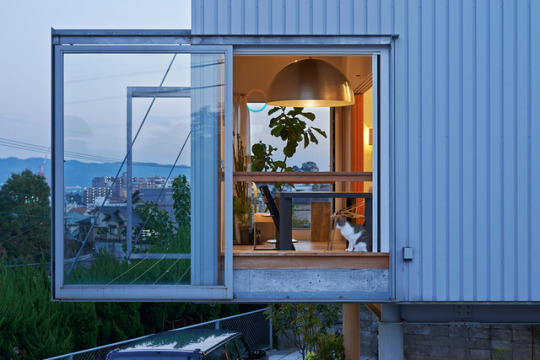
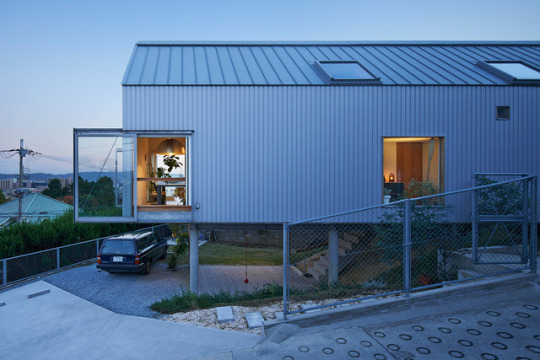

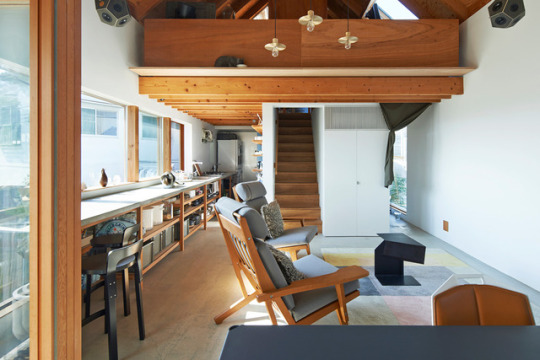
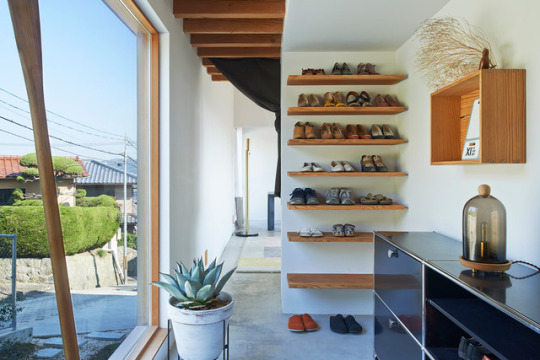
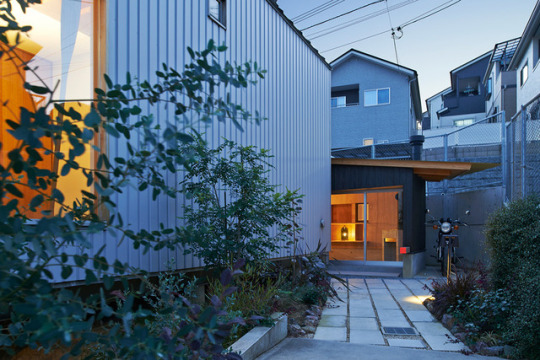
ninkipen!. New Light Pottery. Ikoma. Japan. photos: 河田弘樹
#architecture#design#exterior#house#building#home#living#residential#city#architags#ikoma#japan#japanese architecture#japanese design#ninkipen!#pottery#architecture student
1K notes
·
View notes
Text
Chapters 159-162

Ikoma just does whatever he feels like and I can respect that

So seven with over 10,000, I don’t have the BBF to consult but off the top of my head that’s Tachikawa, Kazama, Konami, Murakami, Ikoma, Yukimaru probably? And one other. I can’t tell if there’s specifics with what Sasamori said that didn’t get translated but it seems like he’s talking about currently, so that would disclude Kageura. Jin maybe? Since he’s A rank now I guess he would count but not sure

Jeez almost 46,000 points. This dude must do nothing but fight people

What he said

Edgy 16 year old alert. I’m sorry Hyuse, it really does sound like you’re trying way too hard to be edgy.

Wholesome beefcake moments

Hyuse’s face lmaoooo

Chika’s little :> is so cute haha

So out of the dead people we know, the one next to Rindo is probably Kazama’s older brother, and the one in the middle next to Shinoda with the sunglasses is probably Mogami. Yuri said this picture is about 6 years old, so Konami’s 11 at this point! She’s so small! Yugo would’ve left Border by this point I think
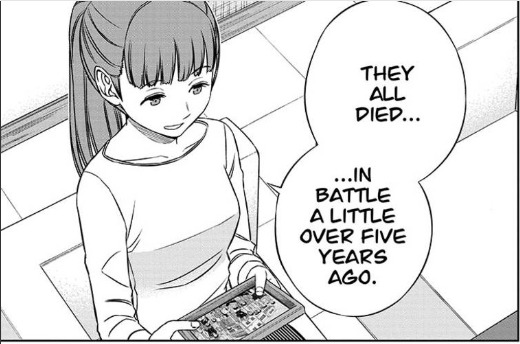
Oof that’s a lot of dead kids. Since the time frame in which they died is the same, it was probably all during the war pre large scale invasion

Pretty far cry from Kido’s “all neighbors are the enemy” ideology
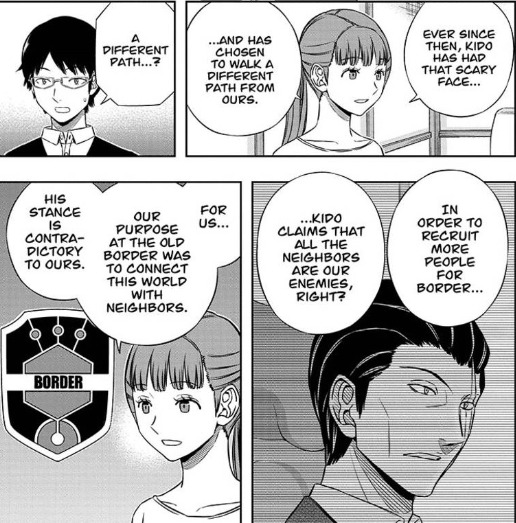

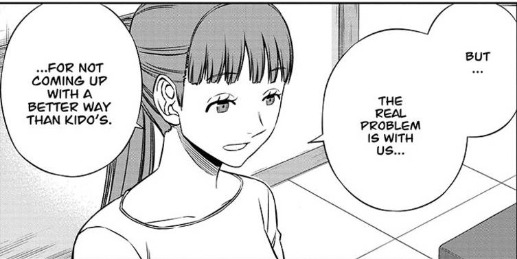
So it’s still vaguely unclear what Kido’s exact personal stance on everything is, but publicly he adopts the neighbors are the enemy mindset in order to recruit for Border. He’s smart about it, he knows Border needs more members and needs to establish itself, so he appealed to the traumatized and hurting city with the inaccurate but easy to understand neighbors are the enemy mindset, especially since the public doesn’t know there are humanoid neighbors, they just see neighbors as trion soldiers. By drawing this distinction of “them” and “us”, you can get both people like Miwa and formerly Kazama who join Border more for revenge or as a coping mechanism, but you can also get people who want to protect the city from neighbors as well. It might not be morally perfect per se, but it’s also the logical thing to do, and like Yuri is saying here, it’s not like there’s an easier other way to do things. As Border’s expanded, there’s all sorts of ideologies, and while people’s stances change as they’re older and realize that this originally presented black and white mindset isn’t correct, like Kazama for example, there’s still room for those varying ideologies.

Happy Yuma!
5 notes
·
View notes
Text
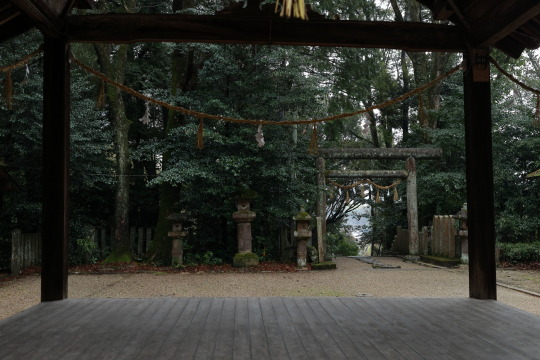
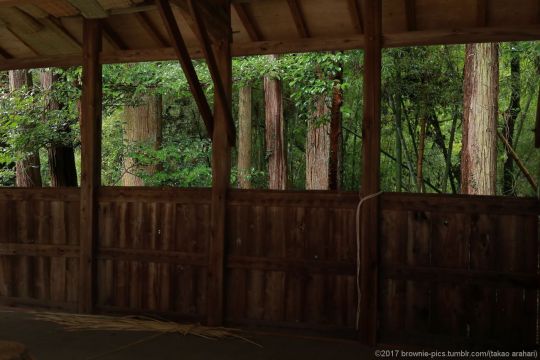

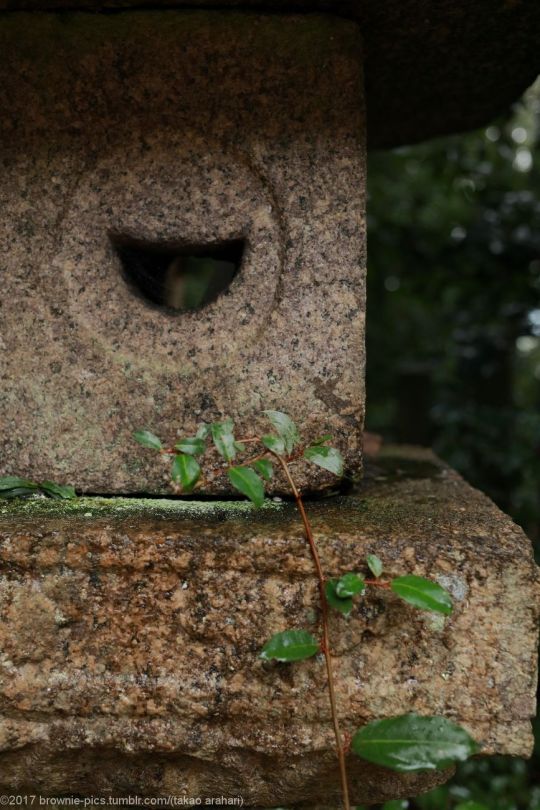



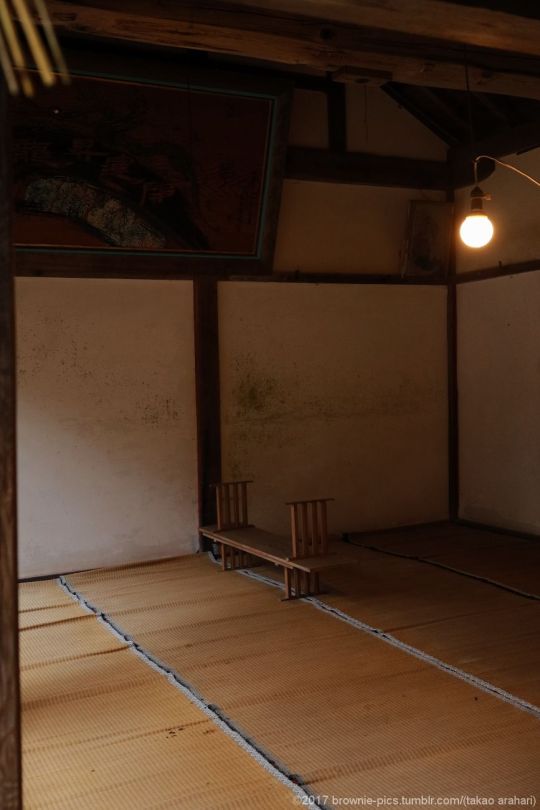


'24.2.25 生駒市 高山八幡宮にて
写真展の最終日、車で拾いに来てくれた@masachi さんがちょっと立ち寄りたいとのことで、僕の住む市内の神社へ。地元ゆえ近くは何度も車で通ったことがあるのですが、ここに神社があったとはつゆ知らず、masachiさんの情報収集力に驚きながら現地へ到着。
小雨降る中神社へ入ると、静かでとても風情の良い場所。雨と緑で濃ゆくなったフィトンチッドを嗅ぎながら境内を撮り歩き。
秋ごろにまた来たくなる場所でした。masachiさん、良い場所教えてもらって感謝です。
#生駒市#ikoma city#奈良#nara#日本#japan#高山八幡宮#takayama hachimanngu shrine#冬#winter#雨#rainy day#photographers on tumblr#natgeoyourshot#奈良公園じゃないシリーズ
148 notes
·
View notes
Photo

A painted image of Aizen Myōō (愛染明王) at Hōzanji Temple (宝山寺) in the Monzenmachi neighborhood of Ikoma, Nara Prefecture
Color on silk dating to the Kamakura period (1185-1333)
Image from the Ikoma City Digital Museum
#japanese art#buddhist art#愛染明王#aizen myoo#奈良県#nara prefecture#生駒市#ikoma#門前町#monzenmachi#寶山寺#宝山寺#hozanji#真言律宗#shingon ritsu#hanging scroll
24 notes
·
View notes
Text
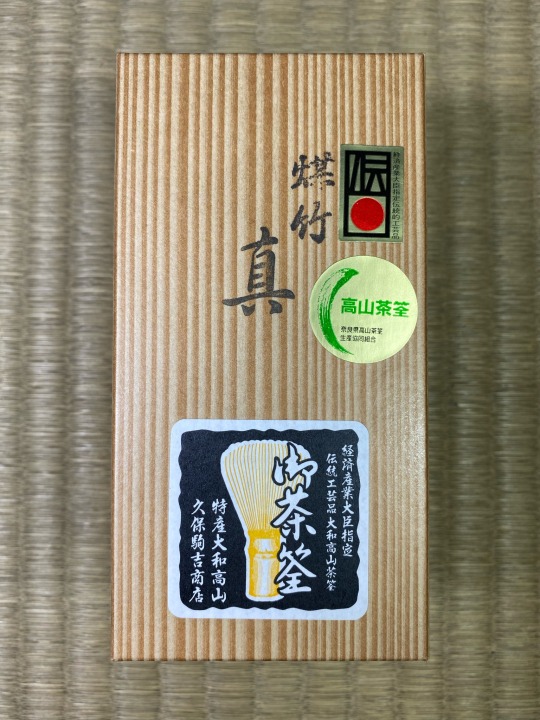

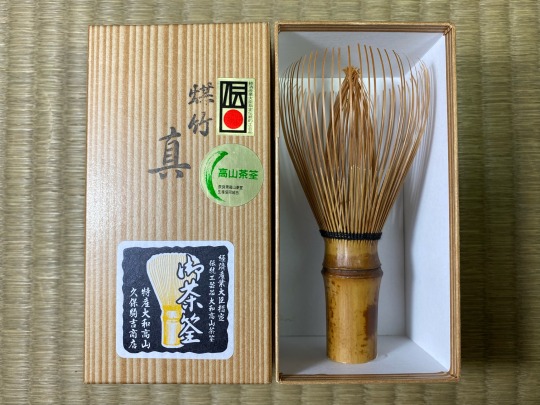
Susudake Shin chasen (煤竹 真 茶筅) 13,200THB
Crafter : Kubo Komokichi (久保駒吉)
Brand : Kubo Komakichi Shōten (久保駒吉商店)
Area : Takayama district, Ikoma city, Nara pref.
งานแปรงไม้ไผ่จากไผ่ซุซุดาเกะหรือไผ่รมควัน สีของไผ่ชนิดเกิดจากคราบควันสะสมของเตาฟืนในห้องครัวของบ้านไม้โบราณอายุนับร้อยปีในญี่ปุ่น ปัจจุบันแทบจะไม่มีการรื้อถอนบ้านไม้โบราณอีกแล้ว ทำให้ไผ่ซุซุดาเกะเป็นของหายากและมีราคาแพงมากเมื่อเทียบกับไม้ไผ่ทั่วไป ถือเป็นของหายากและส่วนใหญ่มักถูกนำมาใช้เป็นของประดับบ้านมากกว่าจะเอามาใช้จริง
1 note
·
View note
Text
While I’m at it, I decided to check on other tourism sites, to see if anything else has changed since.
The Kounan City website no longer offers the “Nobunaga and Kitsuno history route”. It has now been replaced with a generic “Historical sightseeing route”.
All that I can find of the old “Nobunaga-Kitsuno Route” was a blog post made by somebody who did the sightseeing walk and documented their experience.
It was basically just a tour map of places relevant to the Ikoma family, since I don’t think any of those had much to do with Nobunaga. It just had romantic-leaning comments in the location descriptions, echoing the “Kitsuno was the one Nobunaga loved the most” old stories. The only one that is somewhat relevant is one of the Ikoma family’s shrines, because it claimed that Nobunaga’s son was born in that very temple.
I’d wondered if they got rid of that because the old story is considered “debunked”, but they had also gotten rid of the Hachisuka Koroku and Maeno route, so I suppose not. Instead they made a new “temples” sightseeing route. Maybe they just wanted to repackage the walking routes to be more relevant to a wider range of audience/tourists, and not Sengoku-heavy.
The sites are still listed individually on their site, though, and some of them are still included in the new sightseeing route. So tourists wanting to see them will still be able to find them. It’s just no longer packaged together as a “full course”.
The website unfortunately has no English version, just an auto-translate toggle that is basically Google Translate. It’s still pretty navigate-able, though, if you really want to go there and take a look.
0 notes
Note
For Spotlight Sunday! come back (please take care) on AO3 by gowonsfriedscalp! Thank you !!
come back (please take care) by gowonsfriedscalp
Ikoma Komari takes her kids on a field trip to Jakku City.
It was meant to be a casual trip- just some sightseeing with the kids, but then the calls came in, and the nearby heroes escort her class onto a nearby bus.
She barks at the children to look forward so they don’t see the torrent of rot swallow up the caught heroes.
5 notes
·
View notes
Link
Asakusa is the center of Tokyo’s shitamachi (literally “low city”), where an atmosphere redolent with the city’s past survives. Asakusa’s main attraction is Sensō-ji, a very popular Buddhist temple, built in the 7th century. The entry to the temple is via the Nakamise, a shopping street well known for its wood-block prints, local snacks, traditional kimonos and dangling paper lanterns.
The year was 1995. I was on one of my early visits to Japan. While looking for the usual touristy knick-knacks at the crowded Nakamise souvenir shops, I got into a conversation with a young Japanese lady who spoke good English and was curious about the Ganesha tee I was wearing. As we got chatting she pointed me to a temple on a slight hillock nearby saying I could meet Lord Ganesha right there in Tokyo too! I was amazed and intrigued.
Matsuchiyama Shoden (also called the Honryūin Temple), poised on a low hilltop oversees the Sumidagawa river and was immortalised in one of Utagawa Hiroshige’s famous Ukiyo-e (woodblock paintings). This temple of the Tendai Sect of Buddhism, the tourist information board said, was most likely established in 601 AD (even perhaps in 595 AD as per other records). Yes, that is older than the main Sensō-ji temple of Asakusa (which was most probably established in 645 AD). Matsuchiyama Shoden is a Ganesha temple, dedicated to Kangiten.
The Japanese deity Kangiten inherits many names and characteristics from the Hindu god Ganesha. He is known as Bināyaka-ten very similar to our Hindu Vinayaka; the Japanese names for the God - Ganabachi and Ganwha sound very similar to Ganesha. Like Ganesha, Bināyaka is also the remover of obstacles, and when prayed to, he is supposed to bestow good fortunes on devotees, shower prosperity, bestow success and good health to all. In addition, Bināyaka-ten in Japan is said to be the destroyer of Evil; a beacon of morality. Research shows me that there is yet another moniker for Ganesha … Shō-ten or Āryadeva, the harbinger of good luck and fortune. So much for similarities.
The name Kangiten, is generally connected to Tantric embracing deity icons, venerated as the givers of joy and prosperity. The Dual Kangiten icon called Soshin Kangi-ten (“dual-bodied god of bliss”) is a unique feature of Shingon Buddhism. It is also called Soshin Binayaka in Japanese, and is really the same as Nandikeshvara in Sanskrit.
Early Buddhism was deeply intertwined with Hinduism. Consequently, many Japanese schools of Buddhism, especially those influenced by Tantric thought, brought Hindu devas or gods in their fold of worship. Some of these, over time, got adopted in the local pantheon and are associated with different bodhisattvas. So, the lines have kind of blurred over the centuries.
Interestingly, the Japanese avatar of Lord Ganesha is not into modaks. His favourite offering is radishes! All across the temple of Matsuchiyama, on the walls and on the roof, all I saw were carvings and paintings of daikon (Japanese white radish). Kangiten in Japan, I was told, is a creator of obstacles, who is however placated easily through prayer and transforms into a remover of obstacles. And what appeases him are radishes! Daikon is seen as a symbol of marital harmony, better relations and love between married couples. Blessings of Kangiten, the brochure said made for perfect matchmaking, and helped fertility post marriage. Symbolism very similar to our Lord Ganesha.
The Vigraha below is located in Kyoto and was installed by Emperor Gikogon in 1372 CE.
Kangiten / Vinayakaten are the names of Ganesha in Japan and he has been worshipped in the country for past about 1000 years.
Daikon offerings were emblazoned on lanterns, stone plates and wood carvings at the temple. They were everywhere. Matsuchiyama Shoden apparently holds a daikon festival on 7 January every year when people come to pray for the well-being of their families and success in business. When a daikon is offered by a devotee, the pershad given by the shrine is cooked Japanese radish (furofuki daikon) and sacred rice sake (omiki). The sake is pretty usual at Japanese shrines but the cooked radish was surely different. At the temple, besides the overwhelming daikon imagery, there were plenty of images of money pouches too. I think the pouches signified success in business. Not different from Hindu symbolism.
“Bliss-buns” (kangi-dan), a deep fried confection filled with red-bean paste is supposed to be a delicacy of the Shoden temple. However, I could not sample these during my visit.
A poster on display at Matsuchiyama Shoden talked about an oil-bathing (yokuyu kitō) ritual to honor the deity Kangiten, referred to him in the communication as the God of Bliss. The ceremonial bathing ritual was apparently meant to fulfill all the prayers of devotees, I was told during my temple visit. How the ritual bathing is exactly done however was not very clear, as there was no information available about it. It must be, I suppose, like the mustard oil poured at Hanuman temples on Tuesdays back home. One session, the poster said, cost JPY 3500. I had to give the oil-bath a miss, whatever it was supposed to be.
The Matsuchiyama Shoden temple is rather small. There is a small pond on the premises. The hill, a local informed me, is accessible by The Sakura Rail, a cross between an elevator and a monorail. I came back blessed from the temple visit though the actual Ganesha statue remains ‘vaulted’ because it is ensconced in an inner sanctum not visible from the public areas.
While Kangiten is worshipped throughout Japan, Hōzan-ji on the summit of Mount Ikoma is his most important and active temple. Though the temple is believed to have been founded in the sixth century, it came in the limelight in the 17th century when the monk Tankai (1629–1716) made the temple's Gohonzon, a Heian period, gilt-bronze image of the Dual Kangiten, the centre of attraction and devotion.
There is also a large Kangiten in Kyoto, installed by Emperor Gikogon in 1372 CE, which is the closest likeness to the Indian Ganesha.
So, during this period of Ganesha celebrations in India, it is gratifying to know that the Lord’s dominions extend to far-away Japan where the Vighnaharta has a following too.
Dr. Sandeep Goyal is a self-confessed Nipponophile. He has visited Japan over 100 times. He is the author of two books on Japan, Konjo – The Fighting Spirit and Japan Made Easy, both published by Harper Collins.
2 notes
·
View notes